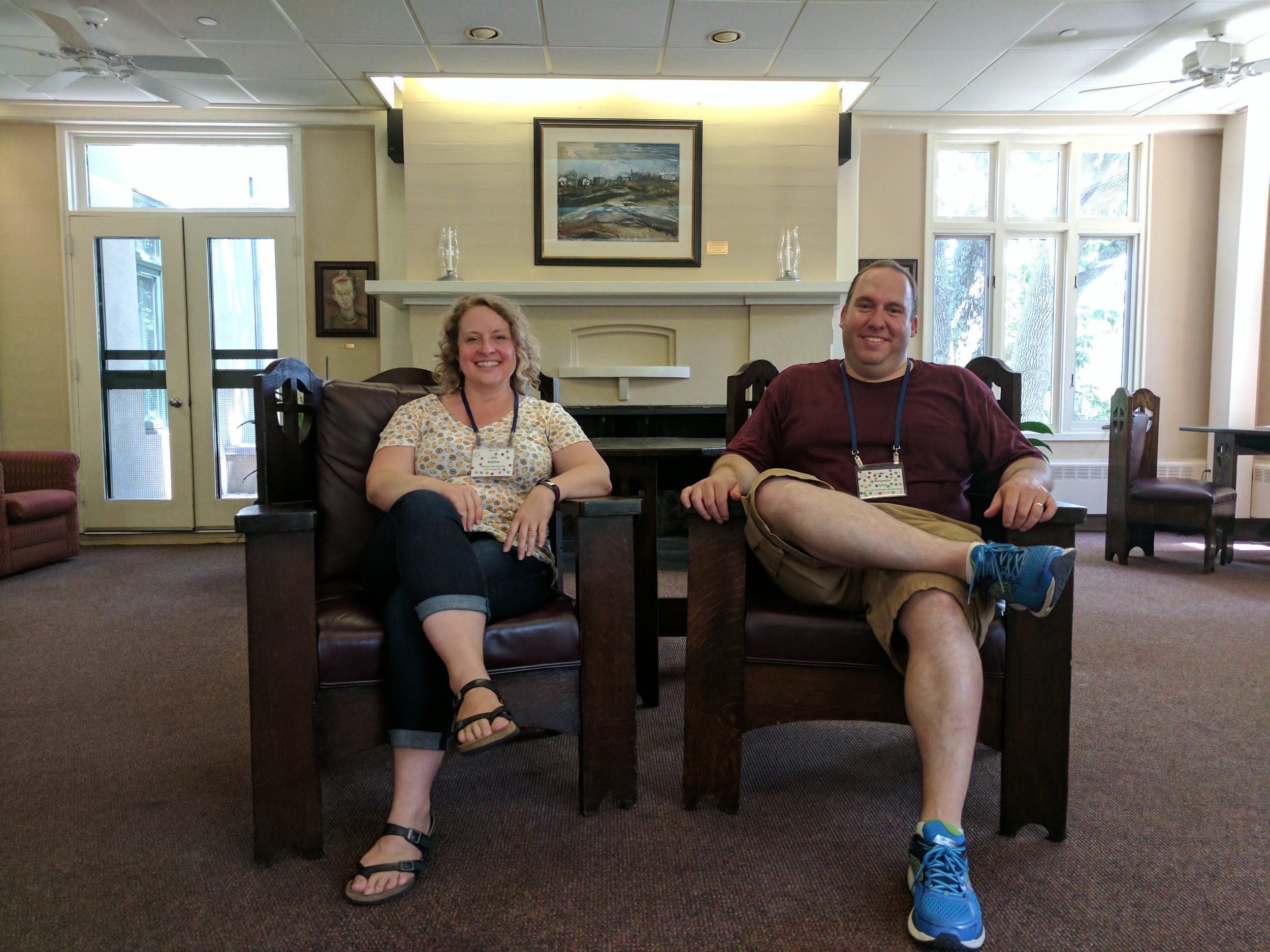We recently chatted with the Mouse Development, Stem Cells & Cancer course instructors Benjamin Allen and Amy Ralston. Ben and Amy, for a number of years, have been involved with the course in various capacities but this is the first year both are co-lead instructors so we dived right into the benefits of participating in the course.
Ben: From my standpoint, the students get two important things out of the course. Sure they learn how to do these techniques and practice them a few times while they’re here but, more importantly, they get introduced to the people who are experts in each of those techniques. So even if they walk out of here not an expert in a particular technique, they’re now friends with an expert they can contact. So if they’re doing experiment X and running into technical troubles, they can feel free contact one of the best people in the world to get advice.
Amy: In addition to the professional and scientific opportunities, we’re trying to maximize our students’ networking opportunities. We bring in about 30 additional experts from fields we’re not experts in so the students are exposed to a broad number of topics and taught classes and labs by those experts. One thing that is new to this year’s course is “First Drink”, where the students sign up to host a lecturer of their choice and take the lecturer to the Blackford Bar to buy his/her first drink. I think the students really like it! I’ve asked feedback from the lecturers too, and one comment I heard from a lecturer who has been here several times was that there were interactions that probably wouldn’t have happened otherwise.
Curious as to what other updates were made, we asked the first-time lead instructors if they made any changes to the curriculum.
Ben: Amy and I replaced a few of the labs with ones that fit more smoothly with the flow of the course and that give the students a fuller grasp of the different stages of mouse development. We also swapped out some of the lecturers.
Amy: Another thing we’ve done, which is in response to survey feedback from last year’s students, is to give the students multiple opportunities to try each experiment rather than offering more experiments with fewer opportunities to practice. So far, I see people mastering things a little bit more and I’ve seen a lot less frustration than in previous years when we were ambitious with the number of experiments we taught.
In addition to the changes made to the course curriculum and lecture lineup, Amy and Ben incorporated a hot new experimental approach into this year’s course.
Amy: Top secret! No, I’m kidding. It’s CRISPR. The course was originally designed to teach scientists how to make transgenic mice or knock-in mice the old fashioned way. But now that CRISPR exists, we adapted a lot of those same approaches to facilitate CRISPR, which is more efficient than the old approaches but it requires the same skillset.
Ben: CRISPR is the newest and biggest thing we incorporated into this year’s course. Last year was the first year we taught CRISPR and it was successful…
Amy: Successfully CRISPR-ed.
Ben: …we expanded it this year and we’re hoping it will be successful again.
The Mouse course celebrates its 35th iteration this year. To commemorate the course’s milestone anniversary, the organizers coordinated a special one-day symposium. Trainees of this year’s Mouse course – in between checking in on their experiments, of course – were treated to a full day of talks from scientists who made significant contributions to both the course and to mouse biology.
Amy: We’re really excited that we were able to invite all 3 of the founders of the Mouse course. They were all present for the Symposium: Brigid Hogan gave a talk at the Symposium, Liz Lacy gave a lecture this week, and Frank Costantini is arriving in a few days. It’s special to have all the founders present to acknowledge the course’s 35th anniversary.
We closed our laughter-filled conversation with their advice for future Mouse course applicants.
Amy: It’s very important to justify how the Mouse course will enhance their career and research project. When we have a clear understanding that the student is familiar with what happens at the course, then we can be confident that they’ll have a satisfactory experience.
Ben: Also, we would recommend they ask their advisor or letter writers to do the same, to emphasize how the course is going to be a practical benefit. We don’t want this to be an intellectual exercise. Our hope is that students walk out of here trained, to actually use the techniques we’re teaching them here.
Thank you to both Amy and Ben for taking the time to chat with us. For more conversations with our other meeting organizers and course instructors, go here. Also, to gain a trainee's perspective on the Mouse course, read our Q&A with Rebecca Lea. In the meantime, enjoy the results of our rapid-fire photography session with Ben and Amy.





